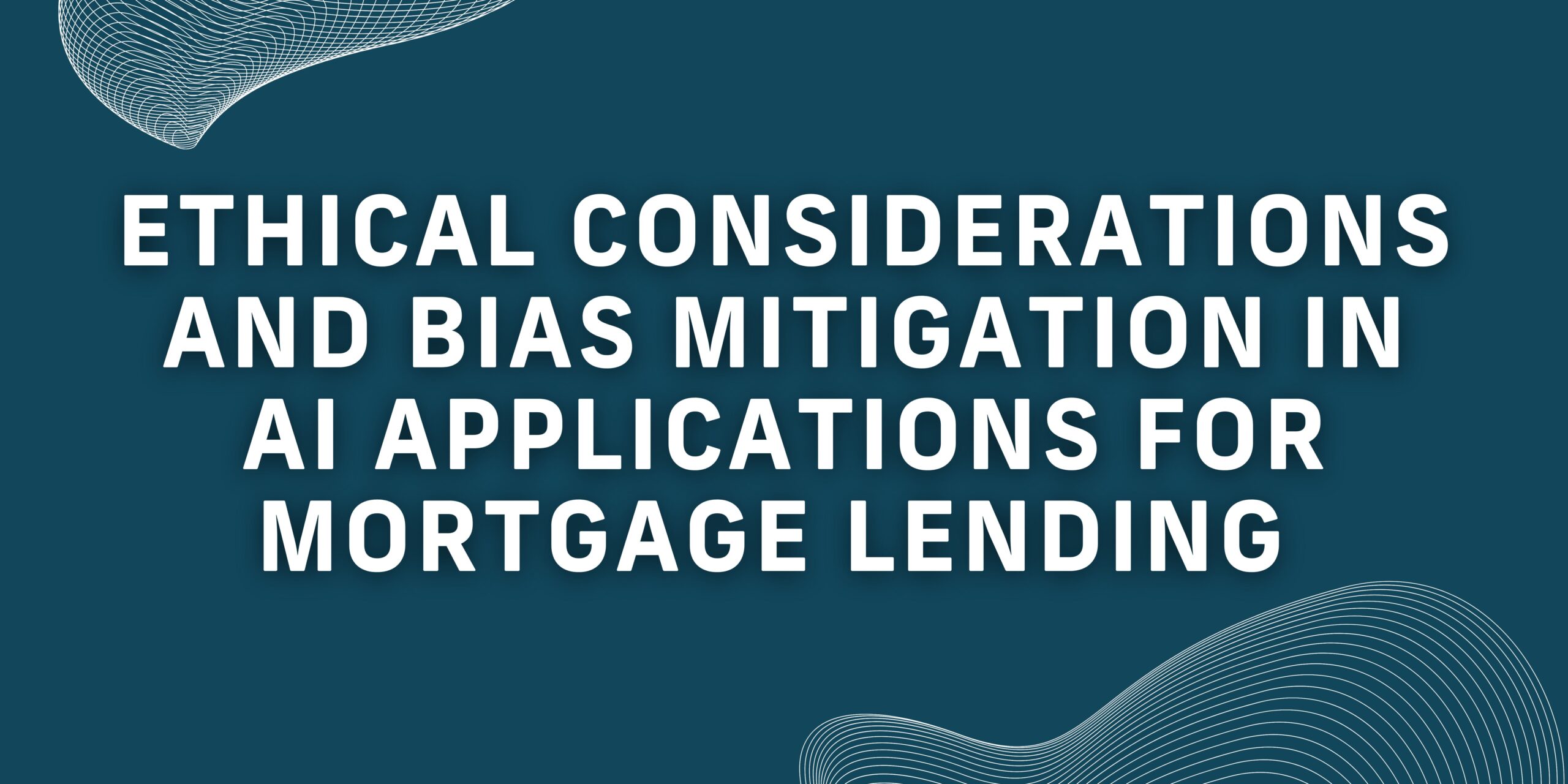Ethical Considerations and Bias Mitigation in AI Applications for Mortgage Lending
As Artificial Intelligence (AI) becomes increasingly integral to the mortgage lending process, the need to address ethical considerations and mitigate bias has never been more critical. Responsible implementation of AI tools can ensure fairness, transparency, and non-discrimination in lending practices. For mortgage lenders, this is not just about regulatory compliance; it’s about building trust and fostering long-term relationships with borrowers.
Understanding Bias in AI Systems
AI systems learn from historical data. If this data reflects past biases or inequalities, the AI system is likely to perpetuate or even amplify them. This can manifest in discriminatory lending practices, where certain groups are unfairly disadvantaged. For mortgage lenders, it’s imperative to recognize the potential for bias within AI tools and take steps to prevent it.
Strategies for Bias Mitigation
- Diverse Training Data: Ensuring the data used to train AI models is as diverse and inclusive as possible can help minimize bias. This includes incorporating data from a broad spectrum of demographic groups and socio-economic backgrounds.
- Transparent Algorithms: Adopting transparent AI models where decision-making processes are understandable and explainable helps in identifying and correcting biases. This transparency is vital for regulatory compliance and building borrower trust.
- Regular Auditing: Conducting regular audits of AI systems can identify and mitigate biases that may have crept in. These audits should be performed by internal teams or external experts to ensure thoroughness and objectivity.
- Ethical Frameworks and Guidelines: Developing and adhering to ethical frameworks and guidelines for AI use in mortgage lending is crucial. These guidelines should prioritize fairness, accountability, and privacy to guide responsible AI development and application.
- Stakeholder Engagement: Engaging with borrowers, regulators, and community representatives in the AI development and deployment process ensures a broader perspective, helping to identify potential ethical concerns and biases.
The Path Forward
For mortgage lenders, the goal is to leverage AI’s capabilities responsibly, enhancing efficiency and decision-making while ensuring fairness and equity. This requires a commitment to continuous learning, adaptation, and transparency. By implementing robust bias mitigation strategies and ethical frameworks, lenders can harness the power of AI to not only improve their operational efficiency but also to build a more equitable and inclusive mortgage lending landscape.
Conclusion
In the journey towards integrating AI into mortgage lending processes, ethical considerations and bias mitigation are paramount. Mortgage lenders have a unique opportunity to lead by example, demonstrating how technology can be used responsibly to make lending more equitable, efficient, and transparent. As the industry moves forward, those who place a premium on ethics and fairness are likely to be the most successful, fostering trust and loyalty among borrowers and paving the way for a more inclusive financial future.
Discover Mortgage Artificial Intelligence
Written by: Cheyenne Pauley
1/9/25




